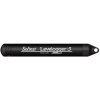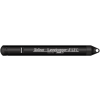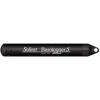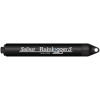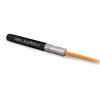Solinst Levelogger 5 App Interface
Features
- Communicate to Leveloggers wirelessly
- Eliminate the need to bring a laptop to the field
- View real-time readings, or download and e-mail logged data files
- Free ground shipping
- Expedited repair and warranty service
- Lifetime technical support
- More
Overviw
The Solinst Levelogger 5 App Interface for the Levelogger Series uses Bluetooth® wireless technology to connect a Solinst datalogger to an Apple® or Android™ smart device. Once connected, the user can view data and program the datalogger using the Levelogger App. The App Interface is compatible with Levelogger’s Direct Read Cable or Adaptor, LevelVent Wellhead, or AquaVent Wellhead Connector Cable.
Mechanics
The App Interface is compact in design, and is easily transported. It uses four 1.5V AA lithium batteries that are easily replaced. The Interface has a power button to turn it on and off, and there is an auto-off after 10 minutes of inactivity. A LED light indicates its status.
*Note: The Bluetooth® word mark and logos are registered trademarks owned by Bluetooth SIG, Inc. and any use of such marks by Solinst Canada Ltd. is under license.
®Apple is a trademark of Apple Inc., registered in the U.S. and other countries. App Store is a service mark of Apple Inc. iOS is a trademark or registered trademark of Cisco in the U.S. and other countries and is used under license.
Android is a trademark of Google Inc.
- Compatibility: Levelogger 5 Series dataloggers, LevelVent 5 and AquaVent 5, as well as previous versions of the LevelVent and AquaVent, and Levelogger Edge Series dataloggers
- IP Rating: IP64 (dust and splash resistant)
- Materials: Black Delrin, 316 stainless steel
- Operating Temperature: -20 C to + 50 C
- Batteries: 4 x 1.5V AA replaceable lithium batteries
- Battery Life: 500 full Levelogger downloads @ 21 C
- Size: 2.25" (57mm) diameter x 4.875" (124mm) length
- Weight: 13.7 oz. (388g)
In The News
Long-Term Monitoring in the Chautauqua Lake Watershed
With a widely developed shoreline, Chautauqua Lake experiences influxes of non-point source pollution that have historically impacted the health of the lake. The Chautauqua Lake Association (CLA) has been monitoring the lake for over two decades, reporting on changes that have occurred over the years. A pair of local lake advocates, Jane and Doug Conroe, have lived on the lake for over 40 years and have played an important role in establishing monitoring programs and facilitating consistent data collection throughout the watershed. Doug has been involved with the Chautauqua Lake Association (CLA) since the pair moved to the area in 1980, and is currently serving as the Executive Director.
Read MoreNo Red Herrings: Data Driving the Largest Salt Marsh Restoration in the NE USA
The Herring River system encompasses around 1,000 acres in the Towns of Wellfleet and Truro, Massachusetts. In 1909, the Chequessett Neck Road dike was built at the river’s mouth, drastically limiting tidal flow. Today, it’s one of the most restricted estuaries in the northeastern United States. As a result, the area has suffered environmental decline, including poor water quality, hypoxia, lower pH, and salt marsh degradation. In 2023, the Town of Wellfleet received $14.7 million from NOAA’s Office of Habitat Conservation to fund the Herring River Restoration Project (HRRP). Francesco Peri, President and CEO at Charybdis Group LLC, uses a network of NexSens data loggers to monitor water level and water quality on the Herring River.
Read MoreCarbon and Nutrient Monitoring in the Great Lakes Using Satellite Observations
Carbon and nutrients are the foundation of lake food webs and play an important role in the chemical and physical processes that shape aquatic ecosystems and various lake dynamics. Studying these cornerstones can help improve understanding of other lake conditions like harmful algal blooms, hypoxia, and phytoplankton community composition. The way in which these characteristics are monitored varies, though many rely on a proxy approach wherein parameters are extrapolated from the measurement of a different parameter. An assistant professor at Cleveland State University, Brice Grunert, is working to improve current strategies and take a satellite approach to monitoring the Great Lakes.
Read More












